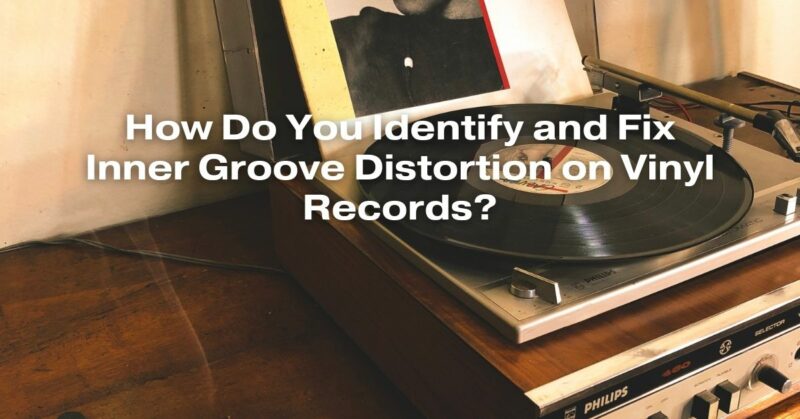Vinyl records have experienced a resurgence in popularity due to their warm sound and nostalgic appeal. However, even the most ardent vinyl enthusiast encounters issues with their records from time to time. One common problem is inner groove distortion, a phenomenon that affects the quality of sound towards the end of each side. In this article, we will explore what inner groove distortion is, how to identify it, and various methods to fix this problem, allowing you to enjoy your vinyl collection to the fullest.
Understanding Inner Groove Distortion
Inner groove distortion, often referred to as end-of-side distortion, occurs when the needle nears the center of the record. As the grooves become tighter, the stylus has difficulty tracking the audio signal accurately, leading to distorted sound quality. This distortion manifests as sibilance (excessive hissing sounds), distortion in high-frequency sounds, and loss of overall clarity.
Identifying Inner Groove Distortion
Auditory Clues: Train your ears to recognize inner groove distortion. Listen for changes in tonality, increased surface noise, and distortion in the vocals or instruments, especially during complex musical passages.
Visual Inspection: Examine the record under a good light source. Look for signs of wear, scratches, or debris in the inner grooves. Even tiny particles can affect playback quality significantly.
Fixing Inner Groove Distortion
Proper Setup: Ensure your turntable is correctly set up. Check the tracking force, anti-skate, and cartridge alignment. A well-aligned, properly balanced tonearm significantly reduces inner groove distortion.
Upgrade Your Equipment: Investing in a high-quality turntable, tonearm, and cartridge can minimize inner groove distortion. Quality components are engineered to handle the nuances of vinyl playback more effectively.
Cleaning Your Records: Regularly clean your records to remove dust, dirt, and static. Use a carbon fiber brush or a record cleaning machine to ensure a pristine surface. Clean records reduce wear on your stylus and minimize distortion.
Use a Quality Stylus: The stylus (needle) is a crucial component. Invest in a high-quality, well-matched stylus for your cartridge. A worn-out or misaligned stylus will exacerbate inner groove distortion.
Consider a Phono Preamp: A good phono preamp can enhance the weak signal from your turntable, reducing the noise floor and improving overall sound quality, including distortion issues.
Avoid Excessive Volumes: Playing your records at excessively high volumes can cause distortion, especially in the inner grooves. Opt for a moderate volume level to preserve the fidelity of your vinyl.
Digital Remastering: If you have a valuable record suffering from inner groove distortion, consider investing in a professionally remastered digital version. This allows you to enjoy the album’s full glory without compromising audio quality.
Track Listing Adjustments: Some vinyl enthusiasts create custom track listings for albums, rearranging songs to reduce inner groove distortion. This method involves moving high-energy tracks away from the inner grooves, ensuring better playback quality for each side.
Conclusion
Vinyl records, with their inherent charm and character, deserve to be enjoyed in their best possible quality. By understanding the causes and solutions to inner groove distortion, enthusiasts can preserve their vinyl collections and savor the rich, authentic sound they offer. Whether through proper setup, regular maintenance, or strategic adjustments, addressing inner groove distortion ensures that the soulful tunes of your favorite albums are faithfully reproduced, allowing you to experience music the way it was intended.


